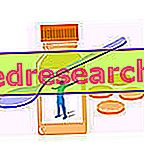Generality
The enthesopathy of the Achilles tendon is an inflammatory pathology involving the heel joint. More in detail, the inflammatory process develops at the insertion site of the Achilles tendon, on the lower and rear part of the calcaneus .

The predisposing factors for Achilles tendon arthropathy are manifold. In most cases, this condition depends on the reiteration of microtraumas and mechanical stress, which, over the years, end up damaging the fibers that make up the tendon. Inflammation can also be favored by important traumatic injuries, such as sudden stretching, and degenerative changes.
Overweight and postural defects, as well as some pharmacological therapies and systemic diseases (gout, rheumatoid arthritis, psoriasis, etc.) can also contribute to the onset of Achilles tendon osteopathy.
Achilles tendon arthropathy manifests as acute heel pain ; this sensation increases or appears by performing a movement that involves the part affected by the inflammatory process. Among the symptoms of Achilles tendon arthropathy there is also swelling along the tendon sheath near the heel and ankle stiffness . After some time, if the inflammation becomes chronic, a calcification ( heel spur ) may occur.
Achilles tendon arthropathy is assessed by clinical examination of the patient, supported by imaging (radiography, ultrasound and nuclear magnetic resonance).
The treatment is variable and depends on the entity of the pathology: in some cases, it is possible to resort to different conservative therapies, while on other occasions it is necessary to intervene surgically.
What's this
Entesopathy of the Achilles Tendon: definition
Achilles tendon arthropathy is an inflammation that affects the fibrous and elastic structure located near the junction between the triceps sura muscle (formed by the calf muscles gastrocnemius and the soleus) and the posterior region of the calcaneal bone .
What does Entesopathy mean?
Infertopathy is an inflammation of the enthesis (also called an osteo-tendinous junction ), ie the insertion of a tendon or a ligament to a bone.
To learn more: Entesopathy - Characteristics, locations involved and main causes »Synonyms
Achilles tendon arthropathy is also known as:
- Enthesite of the Achilles tendon;
- Yarrow enthesopathy.
Causes and Risk Factors
Achilles tendon arthropathy is caused by an inflammation of the postero-inferior profile of the calcaneus of biomechanical, traumatic, systemic or congenital origin. Various factors can contribute to the onset of this pathological process, such as: overweight, sporting activity, advanced age, short Achilles tendon and compression of hard footwear that involve constant stress on the hindfoot.
Entesopathy of the Achilles Tendon: what are the causes?
In the pathogenesis of Achilles tendon dysplasia, the factors capable of playing a role, alone or in combination, are different. These include:
- Trauma to the entesis
Achilles tendon arthropathy may arise as a result of:
- Acute traumas : important traumatic injuries, such as a sudden stretching or distortion may contribute to inflammation;
- Small traumas reiterated over time ( chronic micro-traumas ).
The habit of wearing shoes that are not suitable for a long time, postural defects and the practice of some sports activities expose you to a greater risk of developing the pathology.
Achilles tendon arthropathy is very common among athletes who run. During this sport, in fact, the Achilles tendon contributes to the step of lifting the step, transmitting to the bone the force exerted by the muscles and allowing the movement. Initially, the repeated efforts during the run combined with an insufficient recovery time can cause an inflammation of the paratenonium (areolar adipose tissue that surrounds the tendon), followed by that of the enthesis of the tendon.

- Anatomical conformation
Achilles tendon arthropathy may also depend on a congenital predisposition. This pathology can be favored, in particular, by particular anatomical-structural factors, which determine an abnormal overload of the posterior part of the foot and lead to an unbalanced distribution of the stresses generated during the journey. These causes include a short Achilles tendon and the hollow or pronated foot.
- Systemic diseases
The risk of developing an Achilles tendon osteopathy may increase in the presence of systemic inflammatory, endocrine and metabolic diseases. These include gout, diabetes, hypercholesterolemia and rheumatoid arthritis .
- drugs
Prolonged use of certain types of drugs can promote the onset of Achilles tendon dysplasia. For example, some quinolone antibiotics and repeated corticosteroid infiltrations may increase the risk of tendinopathy.
- Other predisposing factors
Other factors that may predispose to the onset of Achilles tendon arthropathy are:
- Aging of cartilages (early or natural);
- Psoriatic arthritis ;
- Ankylosing spondyloarthritis .
Symptoms and Complications
The main symptom of Achilles tendon dyspathy is localized pain in the posterior region of the calcaneus ; this sensation increases or appears by performing a movement that involves the use of the part affected by the phlogistic process. Pain is also perceived by pressing on the area and is associated with a significant decrease in muscle strength.
The involvement of tendon sheaths can cause swelling, heat to the touch and, rarely, redness of the overlying skin.
Pain may ease, but it may reappear after some physical activities. In any case, the movement is not a good solution: the inflamed Achilles tendon, if subjected to excessive effort, can undergo complete or partial rupture.
Entesopathy of the Achilles Tendon: how does it manifest itself?
For some patients, the Achilles tendon arthropathy is asymptomatic, ie it does not involve particular disorders and the modifications can be minimal.
In most cases, however, inflammation involves:
- Pain in the affected joints;
- Edema;
- Calcification within the entesis;
- Reduction of joint mobility;
- Reactive sclerosis.
The pain at rest indicates a progression of the pathology and can be associated with swelling and joint inflammation, sometimes complicated by calcifications (heel spurs).
In the more advanced stages of Achilles tendon osteopathy, the joint can be completely compromised and even the simplest gestures are difficult, such as putting on shoes or taking a few steps.
As the Achilles tendon arthropathy progresses, involvement at a distance such as low back pain and knee pain can occur.
Diagnosis
Achilles tendon arthropathy is traditionally evaluated with the examination of the foot, through palpation, observation of joint deformity and mobilization of the ankle joint .
Confirmation can be provided by the ultrasound examination and radiography, which allow to establish the degree and extent of the inflammatory process. The echographic findings typical of inner -opathy are the enlargement of the Achilles tendon insertion, which becomes hypoechoic, sometimes with calcifications. In some cases, to deepen the clinical picture, it may be useful to perform the CT or MRI scan.
Treatment and Remedies

The solutions for treating Achilles tendon arthropathy indicated to patients may be different. The choice of therapeutic options depends fundamentally on the extent of the inflammatory process underlying the pathology. In any case, the goal is to reduce the painful symptoms of Achilles tendon osteopathy.
Drugs and physical therapies
In mild cases, therapy of Achilles tendon arthropathy includes rest and use of ice on the affected area.
Achilles tendon arthropathy can also benefit from the use of topical anti-inflammatory drugs (creams, ointments, etc.) or intra-articular drugs (cortisone infiltration) to reduce the pain and inflammation present in the joint.
Alternatively, it is possible to evaluate a physiotherapy intervention aimed at mobilizing the joint and reducing pain. Conservative treatment may also include the use of physical therapies, such as tecar therapy, massages, ultrasounds and lasers.
Other measures may include:
- Performing stretching exercises on the calf muscles and the soft parts of the foot;
- The use of braces and orthoses to allow a correct load in the step;
- Weight loss in overweight patients.
Surgery
If the conservative measures were no longer sufficient for the management of Achilles tendon dystrophy, the doctor can indicate the most appropriate surgical strategy based on the severity of the pathology. The aim is to eliminate pain and restore joint movement.
Complications of osteopathy, such as calcifications and complete ruptures of the Achilles tendon, may also require surgical repair.



